#medieval illumination
Explore tagged Tumblr posts
Text
the 50$ sword i got from a shady flea market was diagnosed to be a wall-hanger rather than a prop so i spent today making it the prettiest wall-hanger in the land
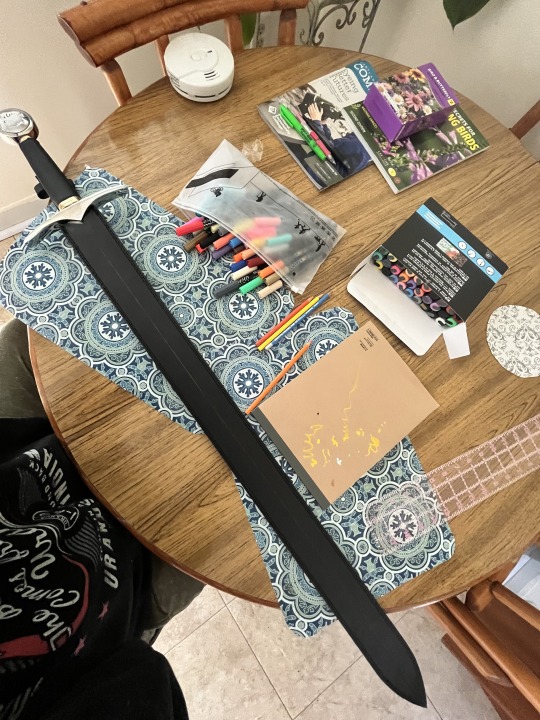



28K notes
·
View notes
Text

Maedhros did deeds of surpassing valour, and the Orcs fled before his face; for since his torment upon Thangorodrim his spirit burned like a white fire within, and he was as one that returns from the dead. Thus the great fortress upon the Hill of Himring could not be taken, and many of the most valiant that remained, both of the people of Dorthonion and of the east marches, rallied there to Maedhros; and for a while he closed once more the Pass of Aglon, so that the Orcs could not enter Beleriand by that road.
✴️
Ink, Japanese watercolors, home made gold watercolor
#tolkien#silmarillion#lotr#my art#silm art#maedhros#maitimo#medieval illumination#illumination#illustration#traditional art#medieval#fantasy#art#hand illuminated
656 notes
·
View notes
Text
Can anyone recommend a book of medieval illuminations, especially bestiaries? The more art and photos the better. I desire to Gaze at Wyrd Beafts on my coffee table
#art stuff#medieval#medieval bestiary#medieval illumination#medieval illustration#Art books#book recommendations
10 notes
·
View notes
Text
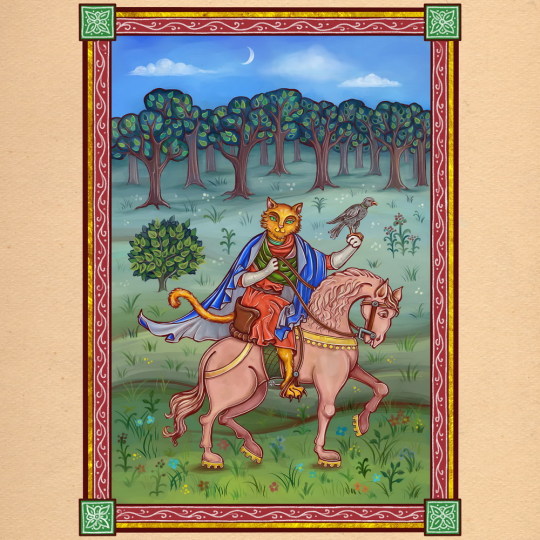
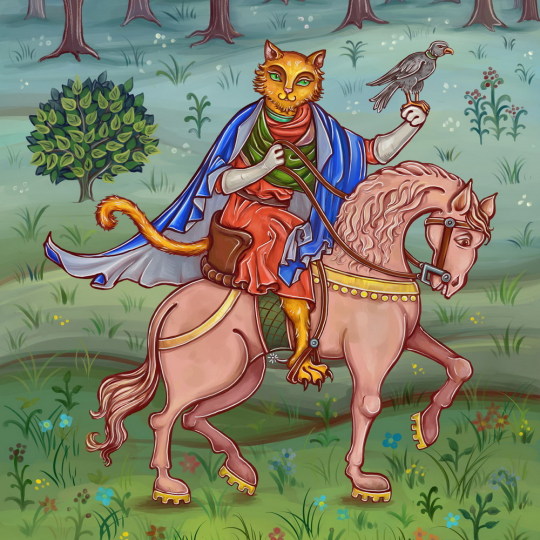
My illustration in the style of a medieval tapestry
#artists on tumblr#artwork#illustration#art#medieval tapestry#Middle Ages#medieva lbook#medieval illumination#medieval cat#fantasy#medieval fantasy#fantasy art#fantasy cat#cat knight#medieval art#fantasy illustration#tumblr art
46 notes
·
View notes
Text
Illuminated Manuscripts

“Christ Kneeling in Prayer in the Garden of Gethsemene” (c. 1475 France, Loire Valley)
Illuminated manuscripts embody the extraordinary union of beauty and knowledge.
Though the art of making them disappeared with the advent of the printing press, the most spectacular manuscripts survived the ages.
Here are 8 masterworks of medieval illumination: 🧵
1. The Morgan Crusader Bible, 13th century

Commissioned by French King Louis IX, the Morgan Crusader Bible depicts events from the Hebrew Bible set in the scenery and attire of 13th-century France — it puts a medieval twist on Old Testament stories.
Consisting of 46 folios, the manuscript displays illustrations accompanied by text written in either Latin, Persian, Arabic, or Hebrew.
The vivid colors and attention to detail make it one of the most popular illuminated manuscripts.
2. The Black Hours, 15th century
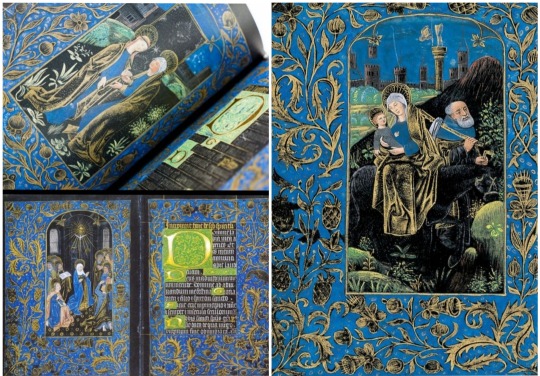
The Black Hours is a book of hours (a type of prayer book) created in Bruges, Belgium.
The style is in imitation of Wilhelm Vrelant, the most popular illuminator of the period and constructed of vellum (calfskin) that’s been dyed pitch black.
Gold and blue paint overlay the dark background to create an almost otherworldly look.
Written in silver and gold ink, the text lists the prayers to be said while depictions of Bible stories aid the reader in meditation.
3. Book of Kells, 9th century

Among the most iconic medieval manuscripts is the Book of Kells.
Created in a Columban monastery, the text is the pinnacle of early medieval calligraphy and illumination.
The graphics are a blend of insular art (the post-Roman era style of art popular in Irish monasteries) and traditional Christian iconography.
Plants, animals, Celtic knots, and biblical figures decorate the 680 page volume to tell the story of Jesus’ life.
4. Codex Argenteus, 6th century
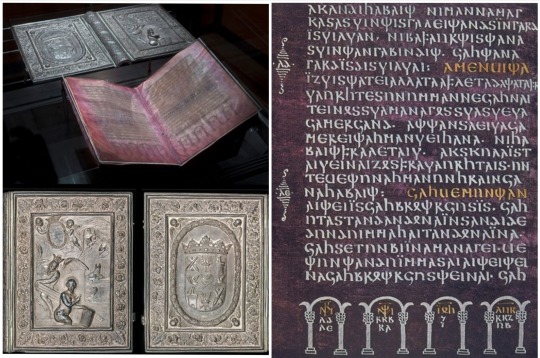
Latin for “Silver Book,” the Codex Argenteus contains the four gospels written in Gothic, making it one of the world’s foremost sources for the now-extinct language.
The book was likely written as a gift for Ostrogothic king, Theodoric the Great.
The work is particularly striking due to its purple-stained vellum pages, metallic ink, and silver binding. Looks almost Tolkienesque…
5. Acre Bible, 13th Century

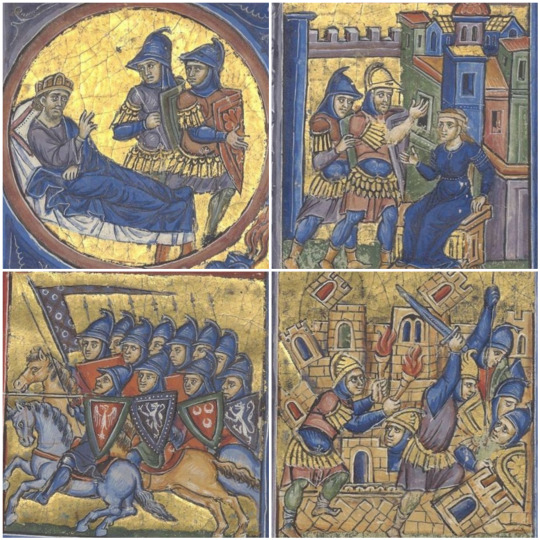
Another work commissioned by Louis IX, the Acre Bible was compiled shortly after the king’s release from captivity during the disastrous 7th crusade.
Upon returning to France, he deposited the masterwork in his newly built Sainte-Chapelle library.
It contains 19 books of the Old Testament, and its illustrations are considered masterpieces of crusader art.
6. The Aberdeen Bestiary, 12-13th century

A bestiary is essentially an encyclopedia of animals and mythical beasts.
They gained popularity throughout the Middle Ages as readers could learn about exotic animals or mythical creatures.
This one was owned by Henry VIII and features a retelling of the Genesis creation story with fantastical images of creatures both real and imagined.
7. The Very Rich Hours of the Duke of Berry, 15th century
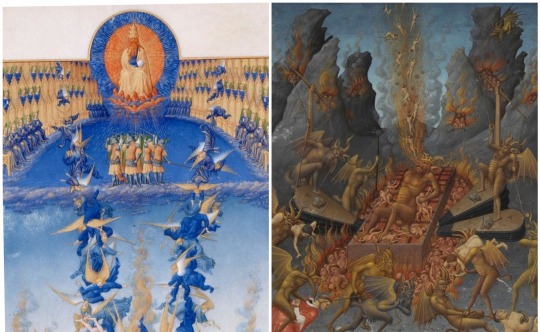
The best surviving example of the International Gothic style of illumination, it’s one of the most lavishly designed late-medieval manuscripts and contains well over 100 illustrations.
Despite beautiful scenes covering most of its pages, the work didn’t shy away from darker imagery.
8. The Berthold Sacramentary, 13th century

Commissioned by the abbot of Weingarten Abbey, this manuscript is a form of missal called a sacramentary used by priests for liturgical services.
A sacramentary gives the priest's readings and prayers for the Mass. This one is a paragon of Romanesque art.
#illuminated manuscripts#medieval manuscripts#medieval illumination#Middle Ages#medieval period#art history#books#handmade books#scribe#illuminator#The Morgan Crusader Bible#The Black Hours#Book of Kells#Codex Argenteus#Acre Bible#The Aberdeen Bestiary#The Very Rich Hours of the Duke of Berry#The Berthold Sacramentary#Wilhelm Vrelant#King Louis IX#medieval calligraphy#Theodoric the Great#bestiary#Henry VIII#Weingarten Abbey#sacramentary#missal
11 notes
·
View notes
Text
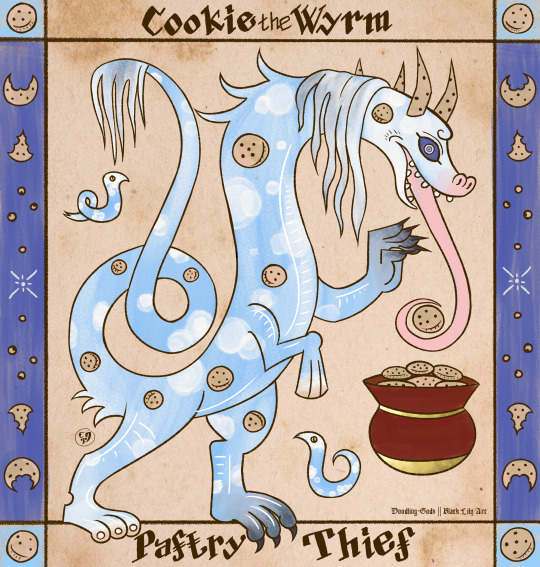
a medieval character commission for the character Cookie the Wyrm.
Co-Fi | Patreon | Twitter | Youtube | Trello
#furry#medieval illumination#medieval#illustration#historical#cookie#dragon#my art#fursona#dragon fursona#furry art
5 notes
·
View notes
Text
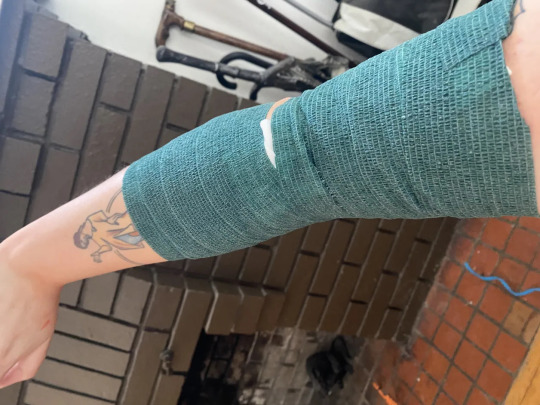
also I got a tattoo partially re-coloured today and they bandaged me in veterinary wrap like I'm a sick horse
#the original tattoo was coloured just fine!#the only problem was that one of the colours was clashing with the tattoo just above it#the neon pink fish belly didn't match well with the earthy palette of my medieval lady#so I had a guy go over it and make the fish belly bright red#(which IS a colour you see in illuminated manuscripts!)#and now I'm very happy with everything
36K notes
·
View notes
Text


turns out there is nothing stopping you from making a pngtuber so you can rp working in a scriptorium
#I’m going to force y’all to watch me play crusader kings#illuminated manuscript#medieval art#medieval#pngtuber#medieval meme#medievalist#pentiment#my art
44K notes
·
View notes
Text
magnificent

there should be plushies of the strange but endearing creatures that live in medieval texts margins
48K notes
·
View notes
Text









Preview of Basilisk, my personal favorite of my risograph comics, and the project all my other recent medieval-inspired art descends from.
Styled after medieval illuminated manuscripts and printed using a custom color palette requiring 5 risograph inks (including metallic gold), Basilisk asks the question: what would drive a teenage girl to create a monster?
Physical copies available here (also digital here). To brag for a moment--this is my masterwork of riso printing and is even more impressive in person.
#thought everyone needed to be reminded of Basilisk#my artwork#my comics#basilisk#risograph#riso#indie comics#zines#printmaking#monsters#beafts#bestiary#medieval#medieval manuscripts#illuminated manuscript#cw abuse
25K notes
·
View notes
Photo

12 Days of Medieval Illuminations. Today, 11 medieval suns. (Getty Museum)
22K notes
·
View notes
Text
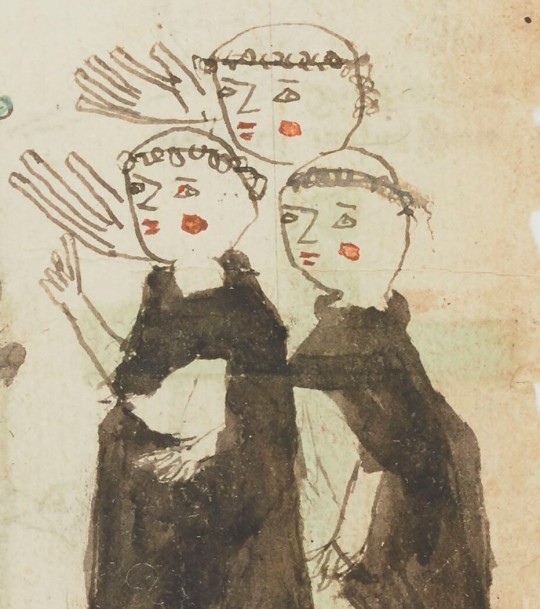
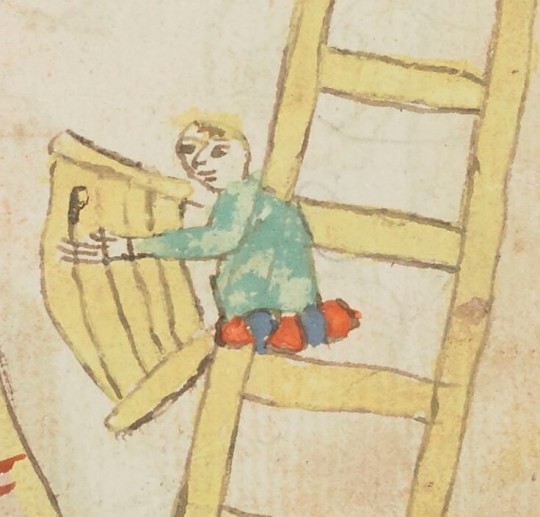

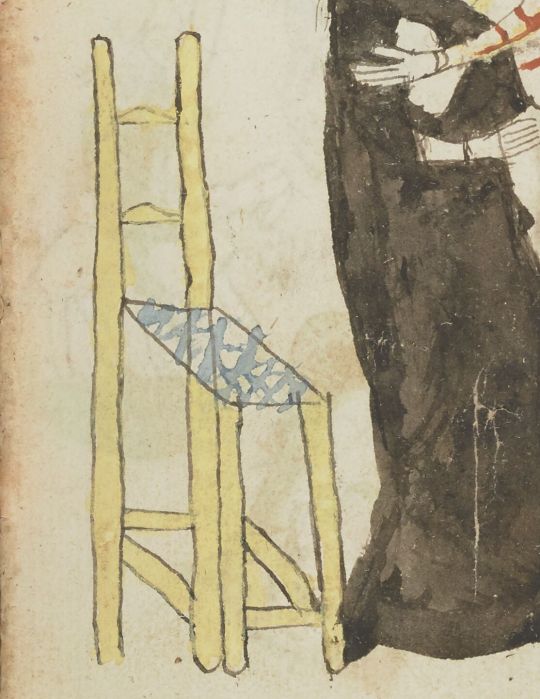
monks, angel, devils, and a chair
in a miscellany manuscript, alsace, ca. 1430
source: Paris, BNF, ms. allem. 222, fol. 120r-122r
#obsessed with this manuscript#the illuminations are so poorly drawn it's really endearing#MonkWhoCouldn'tDrawIfHisLifeDependedOnItCore#15th century#angel#devils#demons#chair#monk#medieval art#medieval illumination
2K notes
·
View notes
Text

Mentelossë medieval style <3
#tolkien#silmarillion#lotr#art#my art#illumination#medieval illumination#medieval#medieval art#calligraphy#silm art#original character#oc#mentelossë
96 notes
·
View notes
Text
[image description: drawing in color of a villain-unmasking scene from the cartoon Scooby-Doo, drawn in the style of a medieval illumination. All the characters are wearing clothing of the same color they wear in the show, but it's medieval style, and their hairdos are also in the style found in medieval illuminations. The background is dark blue with gold eight-pointed stars. From left to right are Shaggy, Daphne, Velma, and Fred, with Scooby in front of them. Fred has just pulled the monster mask off the villain, who sits on the ground tied up. The villain has long grey hair and a beard, and is wearing a costume with a dark bodysuit and wolf's tail and chicken legs and feet. On the right stands a person dressed like a bishop with miter and crozier. /end description]
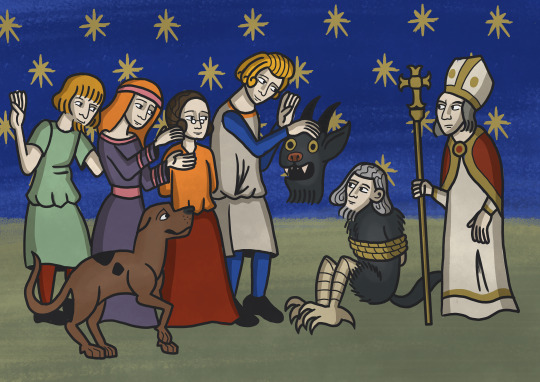
Medieval Scooby
81K notes
·
View notes
Text

i had the idea for this last tdov but it didnt come together until now 🥖🍷 though i'm not religious, this quote is beloved to me
2K notes
·
View notes
Text

what if i told you that 90% of damsel/knight interactions in medieval arthuriana go exactly like this
#artists on tumblr#digital art#illustration#digital illustration#medieval#arthuriana#arthurian mythology#arthurian legend#art#drawing#illuminated manuscript#medieval art#meme redraw#you know the one#i think we’re gonna have to kill this guy#that one#but inspired by every lady in Arthurian legends ever.#I love you Arthurian damosels full of bloodlust <3333#theartofmadeline#artwork#knight blogging#knight core#knights#I think we’re gonna have to kill this guy Steven
3K notes
·
View notes